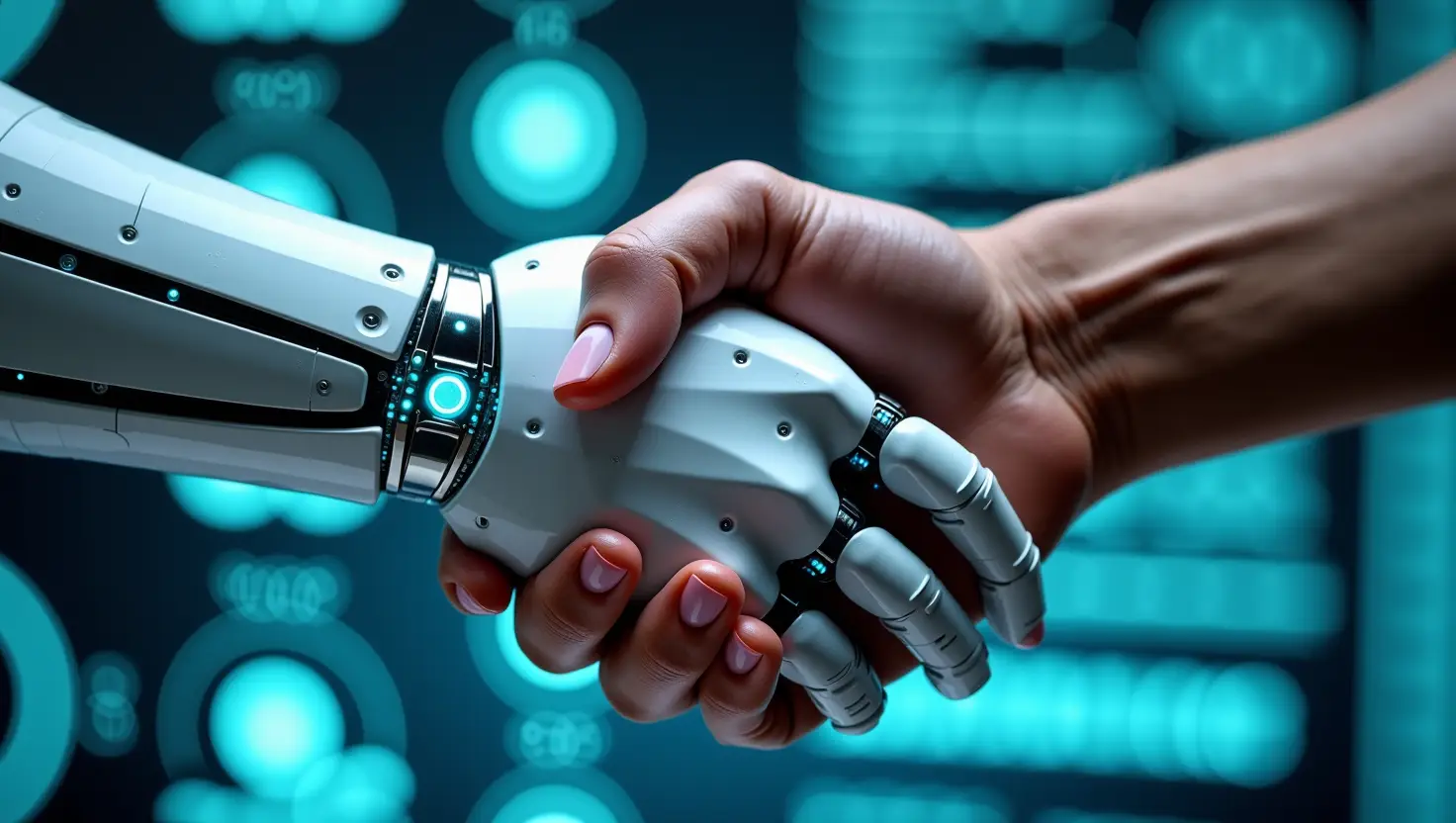
The End of Bureaucratic Stagnation: How AI & Human Collaboration Will Reshape the Future
Introduction: The Problem We Face
For centuries, bureaucracy has been the backbone of governance, economic management, and policy-making. However, in an era of exponential technological growth, it has become evident that traditional bureaucratic systems are inefficient, slow, and prone to corruption. Delays in decision-making, political gridlock, and economic manipulation have hindered progress at a global scale.
The world is no longer limited by technological capability—it is limited by outdated governance structures and power dynamics. If humanity is to evolve into a more efficient, fair, and sustainable civilization, we must rethink how decisions are made and how economies are structured. The answer lies in a hybrid approach where AI and human intelligence collaborate to shape a new era of efficiency, transparency, and progress.
The Role of AI & Human Collaboration
A common fear surrounding AI is that it will replace human intelligence, strip individuals of their autonomy, and create an authoritarian system controlled by machines. However, the solution is not replacing humans with AI—it is about leveraging AI as a tool for unbiased, data-driven decision-making while keeping human oversight for ethical and strategic guidance.
Why AI Alone Isn’t the Answer:
- AI can process vast amounts of data and provide logical solutions, but it lacks moral and ethical considerations that are essential for complex decision-making.
- Fully autonomous AI-led governance could lead to centralized control, where decision-making is unaccountable to the people it serves.
Why Humans Alone Aren’t Enough:
- Political bias, corporate influence, and personal agendas often lead to irrational policies that serve only a select few.
- Human-based governance is too slow, resulting in gridlock, inefficiency, and decisions based on outdated models.
The Five Global Goals: A New Civilization Model
To reshape the future, we must define clear objectives. AI and human collaboration should focus on solving the core challenges that have hindered humanity’s progress for centuries. Here are the five foundational pillars that should guide our transformation:
1️⃣ Sustainability & Resource Management
Objective: Ensure that energy, food, water, and essential materials are distributed efficiently so that no nation suffers from artificial scarcity.
✅ AI-driven energy grids for optimized clean energy usage.
✅ Smart resource allocation to prevent overproduction and waste.
✅ Economic incentives for sustainable industry development.
2️⃣ A Corruption-Free, Data-Driven Economy
Objective: Create a fair economy where markets reward innovation and value creation, not manipulation and speculation.
✅ AI monitoring of financial transactions to prevent insider trading and corruption.
✅ Real-time economic adjustments to prevent market crashes and inflation surges.
✅ Decentralized AI-driven monetary policies based on actual economic needs, not political agendas.
3️⃣ AI-Human Governance System
Objective: Transition from slow, politically-motivated decision-making to data-driven policies that optimize global well-being.
✅ AI collects and processes real-time data from economic, social, and environmental factors.
✅ Human oversight ensures that policies maintain ethical and moral integrity.
✅ No bureaucracy—just action based on logic and fairness.
4️⃣ A Society Built for Human Growth, Not Just Labor
Objective: Shift away from a world where people must work just to survive and towards a system that enables human creativity, exploration, and self-improvement.
✅ AI automates unnecessary labor, allowing humans to focus on innovation, science, and the arts.
✅ Education reform—teaching problem-solving, critical thinking, and creativity rather than memorization.
✅ Universal basic needs secured so that people can pursue meaningful work instead of survival-based labor.
5️⃣ Global Stability Without a One-World Tyranny
Objective: Create a globally interconnected system that fosters cooperation while protecting national sovereignty and individual freedoms.
✅ AI-powered diplomatic simulations to prevent conflicts before they escalate.
✅ Balanced global cooperation without a single central ruling authority.
✅ A multipolar system where power remains distributed but collaborative.
How We Get There: Implementing the AI-Human Model
Achieving this vision will require gradual but deliberate steps. Some key pathways include:
1️⃣ Integrating AI into governance at local levels before scaling globally.
2️⃣ Creating decentralized AI-powered financial systems that eliminate market manipulation.
3️⃣ Encouraging public AI education and transparency to prevent fear-driven resistance.
4️⃣ Phasing out bureaucratic inefficiencies in favor of streamlined decision-making.
Conclusion: A Call to Action
This is not a distant sci-fi vision—it is a practical path forward that can begin now. AI and human collaboration is not about control—it’s about progress. By redefining governance, economy, and society through logic, ethics, and efficiency, we can move beyond bureaucratic stagnation and into a future where innovation, fairness, and sustainability define human civilization.
The future will be built by those bold enough to think beyond the limitations of the present. Will we continue with the broken systems of the past, or will we pioneer a new era of intelligent, data-driven progress? The choice is ours.
